

Black Sound in Green Turtle Cay in the northern Bahamas is a good hurricane hole. Kiwi sailor David Kitching had previously sheltered there during hurricanes Irene and Sandy. But they were mere Category 3 storms – nothing like the monster approaching from the SE.
I had left my boat in Black Sound while I travelled in the UK, but by the time I got back to Fort Lauderdale the new hurricane was looking threatening. Hurricane Dorian was gathering speed as it drifted up from the Caribbean and I wanted to be back on the boat to ride out the storm. In both previous hurricanes I had been on the boat and on each occasion she had needed me.
I contacted a friend, Simon Crowley, who would be in Black Sound during the storm, and discovered that he was busy helping another boat – Kisskadee – whose starter motor had died. With no wind, her owner’s escape trip to Miami had been aborted.
Kisskadee belonged to Jean Claude and Elene. They were now desperate for a new starter motor – could I collect one and bring it with me to Marsh Harbour? This was to be close-run thing as the new unit had to be fabricated and I had already booked my flight to the island. But at the last minute the starter turned up and I was on my way.
I arrived in Marsh Harbour on Wednesday, August 28 and was soon on Simon’s boat, a Gulfstar 53, and we delivered the starter motor to Kisskadee. But – horror of horrors – it didn’t fit, so we decided to tow Kisskadee to Treasure Cay Marina and let them hole up there for the storm. It’s a 12-mile trip and with no wind we wouldn’t have any trouble pulling the boat to safety.
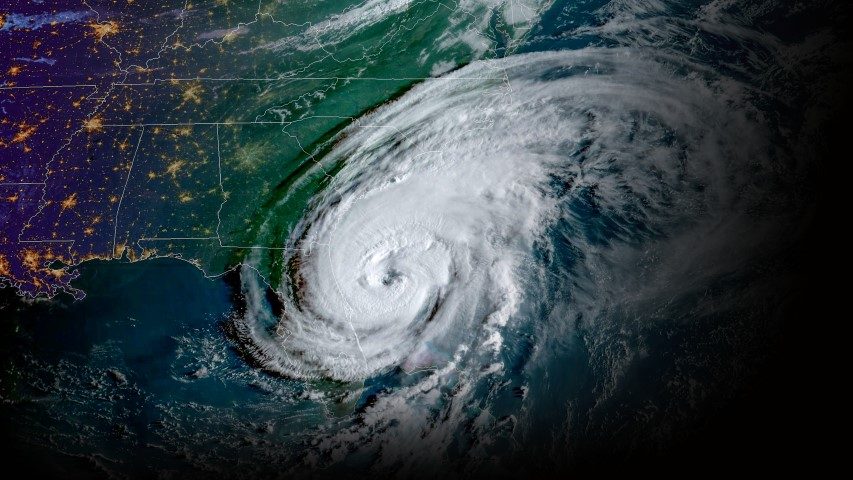
Thursday saw us towing Kisskadee over almost mirror-smooth seas to Treasure Cay and once inside the harbour we manoeuvred the stricken yacht to a berth. Once they were safely secured, we made our way across the shallows to Green Turtle Cay and anchored off the lovely old town of New Plymouth for the night.
On Friday we entered Black Sound and tied Simon’s boat to the mooring he’d booked in advance. My boat, Lazy Days (a 51-foot Morgan 512) appeared to be in good heart except for the dinghy that was half submerged. Simon ran me over in his dinghy and a quick inspection revealed that everything was in order and the engine started immediately.
My wind generator and solar panels had kept all six batteries shipshape over my two-month absence. Even better, there was no mould inside, even though the boat had been locked up in the tropical heat of a Bahamian summer.
The last day of the month was busy. We dug out my hookah (the local name for a small compressor with hoses to a regulator) and Simon spent hours in the water checking the heavy chains that ran to the concrete blocks on the bottom of the bay. All appeared to be in good shape.
September 1 brought grey skies and a rising wind from the north. Dorian was now a Category 5 and was approaching the Abacos at about 5mph. Donny Sawyer, a man I had known for some years and owner of a small marina in the bay, offered to shelter us in his concrete basement – the house above was made entirely of timber.
The main storm was meant to arrive at about 1.30pm but by 10am the wind was near 50 knots and rising, so we took up Donny’s offer and went ashore in Simon’s dinghy. We found two other yachstmen already sheltering there – Keith, the owner of a large catamaran, and Ben, who had a traditional cutter with a long bowsprit. Both had placed their boats in the mangroves, and Keith told us that his insurance agent was happy as “he had never lost a boat tied to the mangroves.”
Donny was cooking some rice and chicken for us in the house but soon abandoned that idea as he thought the house might not survive the rising winds. He and his son Justin joined us in the basement.
The wind continued to rise and about 12.30pm we were in the eye wall. Because of our position we were now stuck in the eye wall for about four hours, with huge blasts of wind and torrential rain that reduced visibility to about 30 yards.
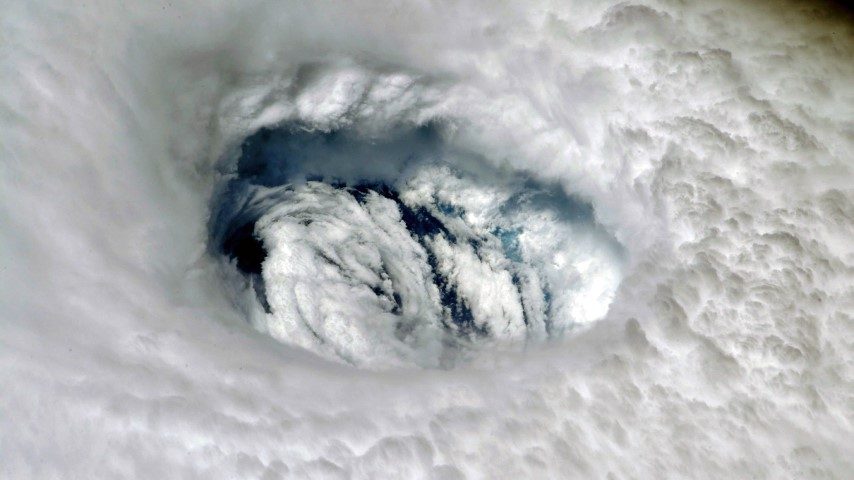
After about half an hour the house gave way and was blown to pieces. This created a new problem for us in the basement as we now had a wooden floor and a carpet protecting us from the torrential rain – which it didn’t. My guess is that most of the time the wind was well above 150mph and one gust was later reported to have notched 220mph.
We could see mini tornadoes lifting debris into the air and most of the trees in the immediate area had been thrown to the ground. At some point the surge came up about 10 feet, but we didn’t see it as the visibility was down to a few yards. The rainwater kept cascading into the basement and we spent a great deal of time sweeping the worst of it out through a more sheltered doorway.
By 4.30pm the worst was over and with the easing rain we could look out over the bay. At first there was no sign of the boats, but slowly through the clearing rain we saw Simon’s boat high and dry lying on its starboard side among the trees.
My boat had dragged its mooring backwards against a dock and then battered itself to death and sunk in about eight feet of water. Keith and Ben’s boats were nowhere to be seen. The mangroves had not been a safe haven. Both boats were later found upside down on the opposite side of the bay.
That evening the wind moved to the SE and blew at about 50 knots with heavy rain. The shelter became a wet hellhole and we spent a lot of time trying to get rid of the water that dripped incessantly through our ‘ceiling’. There was little sleep that night – most of us were sleeping on thin boat cushions and it didn’t take long for the water to rise a few inches above the concrete floor.

Hurricane Dorian had now moved over the eastern end of Grand Bahama and had stalled. For 24 hours the lucky souls there endured the full force of a Category 5 hurricane before it moved off to the north.
Monday morning came and Justin asked if I wanted to go for a walk. It was still blowing about 50 knots but after what we’d been through it seemed like a stiff breeze! Everything, everywhere, was damaged. Downed trees and power lines, demolished houses, sunken boats, crushed cars – and debris of every description littering the landscape.
New Plymouth had sustained a great deal of damage, but one old house dated 1866 still stood proud and relatively unscathed. I guess they knew how to build houses in those days!
Tuesday was much the same. Windy and wet. No power or internet and the only way of making local contact was through our hand-held VHFs.
Wednesday was a lot better. Even a bit of sunshine. I helped Justin clear up some of the house and dump the remains at the local tip. The place reeked as everyone was dumping the contents of their deep freezers. The local wild pigs were having a field day, guzzling on steaks and chicken.
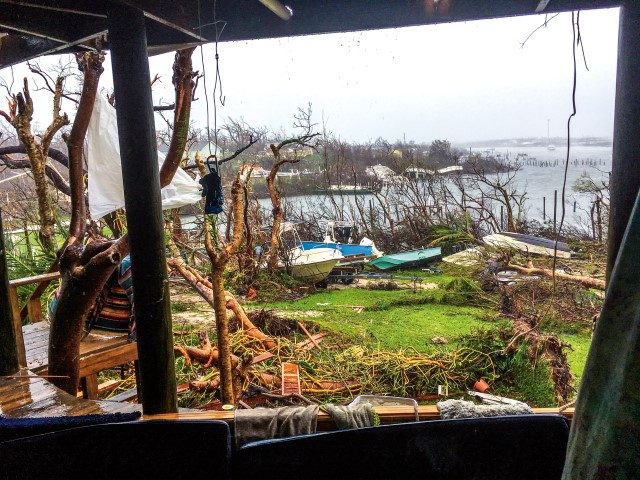
Thursday was much brighter and Donny asked if Simon and I could make an attempt to get off the island as he wanted to store his remaining items of value in the basement and head to Florida on the Saturday. The local ferries had sunk so he offered to run us to the mainland, where a friend would run us to Treasure Cay Airport. He was sure that we would be able to get a lift on a plane back to Florida.
Arriving at the airport we found maybe 400 people waiting for flights, most of them locals wanting to get to Nassau. The terminal buildings had been demolished and there was no sign of immigration or security. Numerous private planes were arriving from Florida, bringing relief supplies and taking out people wanting to leave.
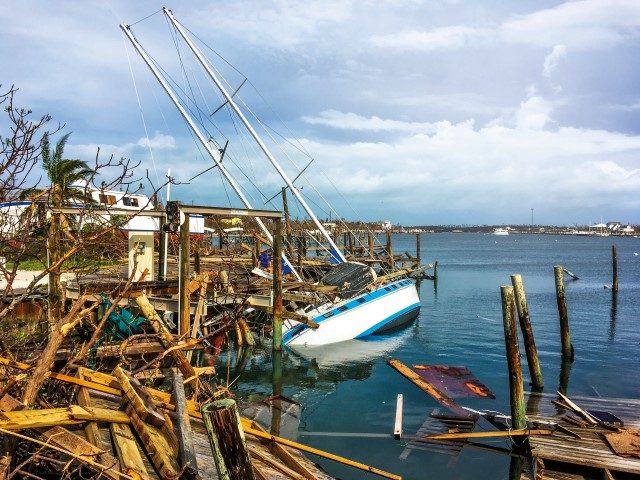
A US Coast Guard helicopter was there, as well as a British Navy helicopter, and a number of relief agencies were already on the island. Food and relief supplies were abundant. The only thing missing was any sign of the Bahamas central government doing anything to help!
Treasure Cay Airport is small – doesn’t even have a control tower, but somehow the locals made it work that day. There was a constant stream of private planes arriving with relief supplies and these were parked in an orderly fashion by volunteer staff and unloaded into whatever vehicles were available.
Soon a larger Bahamas Air plane arrived to take women and children down to Nassau. The first people off the plane were Bahamas Defense personnel, who formed a barrier between the plane and the people waiting to get off the island. I asked one soldier why they were there, and he said that there had been looting in Marsh Harbour, the biggest town on Abaco Island.

The airport must have been one of the busiest in the world that day. Late in the day a huge private jet came in. The cargo hold must have been 10 feet above the ground, but this didn’t faze the locals, who found a battered old lorry and backed it up to the plane for unloading. I held my breath – one false move with the lorry and they could have done untold damage to the plane. But as the locals explained – “no worries man, she be all right”.
We spent most of the day trying to find a lift out but by early evening decided we were doomed to spend a night sleeping on the tarmac. We scrounged a chair and a large airplane cover to make life a bit more comfortable and were about to settle down when a private plane landed and parked just in front of us. Simon asked the pilot if he could give us a lift to Florida. “Sure. But you will be in the cargo hold”. The cargo hold sounded great to us, and as the sun set we took off and headed to West Palm Beach.
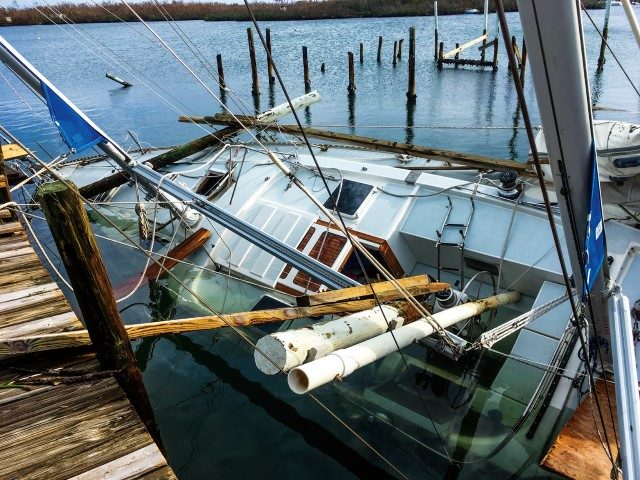
It was dark when we landed and immigration cleared us in as ‘evacuees’. A new one for me! I had survived a Category 5 hurricane and escaped with a small cut on my left foot!
As for Kisskadee – she sank and is a total write-off – like many other boats at Treasure Cay. Luckily, Jean Claude and Elene are to get something from their insurance company and are currently looking for another boat.




